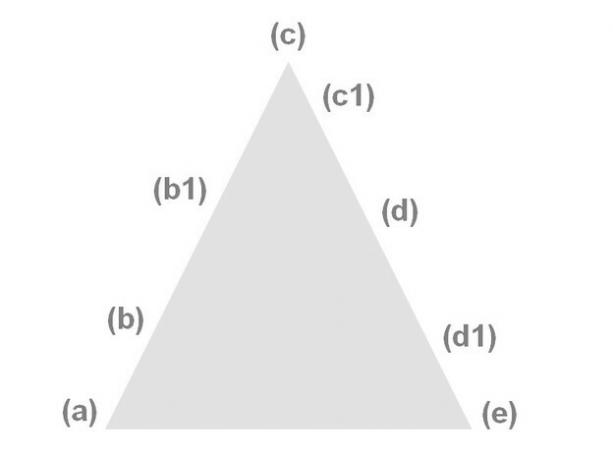Gustav Freytag and his technique of drama
Gustav Freytag published his "Technique of Drama" in 1863, when the closed form of the drama was almost obsolete. Nevertheless, the novelist makes it his business to standardize the form of this traditional drama. In addition to numerous requirements for the course of action and character design, his drama theory deals in particular with the so-called pyramidal structure of the drama. Read here what it's all about.
Gustav Freytag's general information on drama
- Fundamental to the structure of the drama at Gustav Freytag are the soul movements of the characters from which they act. The process of the inner soul and the action carried out externally determine each other and constitute the dramatic. They are reciprocal insofar as the inner struggle of a character leads to the deed and vice versa, the deed and its consequences The following acts on their mind: "The flow and flow of willpower, the becoming of an action and its reflexes on the Soul".
- The dramatic means of depicting this interrelationship between inside and outside are speech, tone and gesture, as well as movement and action. The dramatic effect depends on them.
- Furthermore, the novelist demands the unity of place, time and occurrence by means of motivation, that is the coherence of the plot. The following of an action must be logically and probably deducible from the preceding in order to ensure the inner context of the drama.
- The center of the "Technique of Drama", however, is the pyramid designed by Gustav Freytag Structure of the drama, which is based on the classical structure of drama and the theory of drama Aristotle oriented.
The pyramidal structure of the drama
- The basic structure of the drama consists of an introduction (a), climax (c) and catastrophe (e), represented as a pyramid. The soul movements and the becoming of an act accordingly run upwards from (a) to (c), their consequences and effects on the mind of the hero downwards from (c) to (e).
- Between these three points there are other markers for the development of the characters and the creation of tension in the plot: that exciting moment (a1), the increase (b), the tragic moment (c1), reversal or falling action (d) and the moment of the last tension (d1). However, the tragic moment and the moment of last tension are often left out.
- The pyramidal scheme with its five components thus corresponds to the five acts of the traditional drama. In the first act these are the introduction and exciting moment, in the second act heightening of the plot, in the third act climax, in the fourth act falling plot and in the fifth act disaster. In three or one acts, the scheme is reduced to introduction, climax and catastrophe.
Distinguishing inner and outer action - that's how it works with drama
A drama is a scenario that develops through interpersonal or coincidental ...
Content of the five components at Gustav Freytag
- In the introduction (a) people, place, time, living conditions and the history of the action are characterized. The action only begins with the exciting moment (a1) - it is, so to speak, the kick-off, for example when the hero decides to act or his opponent forges intrigues. In the increase (b), this motivation in "mood, passion, involvement" takes hold of a main scene.
- The climax (c) is the center of the piece and the tip of the previous, increasing action. "The poet will have to use all of his dramatic power to bring out this center point [...]", as Gustav Freytag writes. In contrast to this is the tragic moment (c1), which is often associated with the climax.
- It initiates the falling act (d), in which new tension is aroused and the act of the hero acts back on him. The moment of the last tension (d1) makes it clear that the hero is failing and thus prepares the end. The drama ends in catastrophe (s), that is the "destruction of the hero" and "the complete devastation of life".

How helpful do you find this article?


